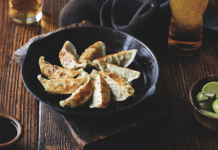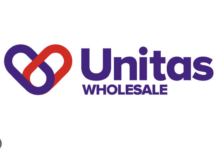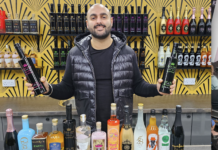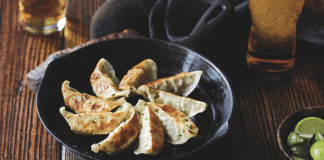Love them or loathe them, pricemarked packs (PMPs) are here to stay. Customers love them, with about half of shoppers saying pricemarks reassure them that they are getting good value.
But those low prices that bring in customers can mean that the share of margin for wholesalers and retailers dwindles, so sales need to rise sharply for them to benefit.
Price promotions, which were once an occasional event, are now the norm in many cases, as the energy drink Boost demonstrates. With 86% of its sales now pricemarked, it is dropping the ‘special offer’ marking to reflect the fact that the pricing is a permanent feature, not a short-term gimmick.
Not every supplier is this committed to pricemarking, but it is on the rise everywhere. As Mark Sterratt, commercial marketing director at Lucozade Ribena Suntory, puts it: “This is a growing opportunity, with consumer demand for PMPs rising. In the past year alone, sales of PMPs have climbed an average of six percentage points in independents and symbols.”
So, how can wholesalers ensure that they stock the products that will produce a valuable boost in sales? And how can they support retailers in making sure that they have the intended impact?
Industry experts suggest that some of the main areas to focus on are impulse buys, soft drinks and new products.
Mark Roberts, trade marketing manager at confectionery manufacturer Perfetti Van Melle, says that in the convenience channel, PMPs and impulse buys are a powerful combination for boosting sales.
“More than two-thirds of shoppers buy PMPs in convenience stores, as competitive pricing encourages impulse sales. As well as offering good value, PMPs help retailers build a sense of confidence and trust with shoppers, with half saying PMPs reassure them that they are not being overcharged,” he says.
Demonstrating the appeal of key price points, Perfetti Van Melle’s £1 bags of products such as Mentos and Fruittella chews are growing at a rate of 30% a year. Positioning is vital in taking advantage of this kind of sales boost, so Roberts recommends passing on merchandising advice to retailers.
“Retailers should make sure PMPs are easy to see and that they are stocked in prominent places where impulse shoppers can take advantage of them,” he says. “In addition to stocking key products by the till, think about where else you might best place PMPs. For example, our Smint £1 PMP might work well next to the coffee machine, and our Fruittella Sharing Bags could be part of a larger Big Night In display.”
Soft drinks are one area where pricemarking has taken over, particularly in independent stores. According to Lucozade Ribena Suntory’s Mark Sterratt, PMPs account for 13.5% of all soft drink sales, but that rises to 57% in independents and symbols.
“Wholesalers understand the opportunity that PMPs present, and they need to educate and encourage their customers to stock bestsellers in the soft drinks category to make the most of the trend and boost their sales.”
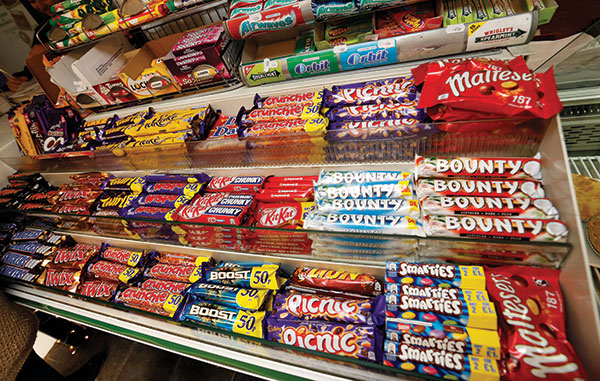 The art of the sale
The art of the sale
Point-of-sale (PoS) material is a proven way to achieve that, Sterratt suggests. The best performers, such as shelf-barkers and shelf-strips, have a conversion rate of 25%, and branded materials are more effective than unbranded ones, Sterratt adds.
“For retailers operating a smaller store format – with time-pressed consumers who don’t walk down every aisle in the store and tend not to buy on impulse – disruptive PoS materials are absolutely vital,” he says. “Wholesalers should ensure that they stock and distribute the PoS provided by the Lucozade Ribena Suntory salesforce and educate their retail customers on its importance.”
Other soft drinks suppliers are trying to address concerns over profits with PMPs. AG Barr has produced multi-buy PMPs, to encourage greater spending by shoppers while still offering them value for money.
“We also use PMPs incorporating an additional multi-buy element,” says Adrian Troy, head of marketing at AG Barr. “This benefits retailers as it encourages additional purchase while still delivering profit and shoppers feel like they are getting even better value.”
The idea was tested with the company’s 1l cartons of Rubicon, which included an on-pack flash with the price of £1.29, or on offer at two for £2. Since that proved a success, it has been extended to IRN-BRU, Barr flavours such as Cola and Cherryade, as well as 1l cartons of Sun Exotic and KA.
Something new?
Amy Burgess, trade communications manager at Coca-Cola European Partners, suggests that pricemarking can also be used to encourage customers to try out new products by emphasising their value for money.
“PMPs are a particularly effective way to encourage consumers to trial new products, thanks to the perceived value they offer, and research shows that almost half of shoppers claim that they would be more likely to try a new line if it was sold in a PMP,” she says.
Mark Roberts at Perfetti Van Melle agrees, adding that new products are an essential way to increase the value of a category and to encourage a bigger basket spend by shoppers, so it is important for wholesalers to get behind them from the start with promotions, pricemarking and maximum visibility in the depot.
“New products are vital in driving category growth as they encourage trading up,” he says. “In order to raise sales and capitalise on early consumer demand, it is vital that wholesalers champion new products in depot.”
But Proctor & Gamble is also using pricemarking to boost sales of essentials such as laundry detergent, specifically for the convenience channel’s top-up mission.
For that reason, it has created smaller-sized pricemarked packs for its popular laundry liquid brands Ariel, Bold and Fairy, that are designed for shoppers who are making emergency trips to their local convenience stores.
“We have seen an increase in popularity for our liquid laundry detergents in the convenience channel over the past year. Sales have gone up by more than 15% compared to this time last year,” says Daniel Jalalpour, P&G’s laundry brand manager.
“By stocking these new smaller-sized PMPs, retailers can encourage shoppers to top up on their laundry care products while at their local store. We want to continue helping retailers to drive sales and grow this category in store. We have seen time and again that PMPs are a powerful tool to help with this.”
Retailer viewpoints
 “It makes a lot of difference where you buy from. We just bought a load of McVities biscuits, buy three boxes and get one box free on price-marked products. When you see good offers, you just pick them up. But some wholesalers, when they have a promotion on un-pricemarked packs, they keep the price of pricemarked packs the same so it’s more expensive.”
“It makes a lot of difference where you buy from. We just bought a load of McVities biscuits, buy three boxes and get one box free on price-marked products. When you see good offers, you just pick them up. But some wholesalers, when they have a promotion on un-pricemarked packs, they keep the price of pricemarked packs the same so it’s more expensive.”
Ash Patel, Gerhold Food & News, London
 “I don’t do PMPs anymore. I did stock them up until about two months ago, but it was not paying. I would rather just get ordinary packs in stock. If people see something pricemarked, then they will go for it. If they want something like a can of Red Bull, which I don’t buy pricemarked now, they still buy it, however.
“I don’t do PMPs anymore. I did stock them up until about two months ago, but it was not paying. I would rather just get ordinary packs in stock. If people see something pricemarked, then they will go for it. If they want something like a can of Red Bull, which I don’t buy pricemarked now, they still buy it, however.
“I will buy pricemarked if it is on spirits. The vodkas and gins do go better with a pricemark on them. I have got Gordon’s gin now with £13.99 on it, and I will sell double the amount that I will of the usual price of £15.”
Kath Hitchin, Lifestyle Express Kath’s Convenience, Caernarfon

